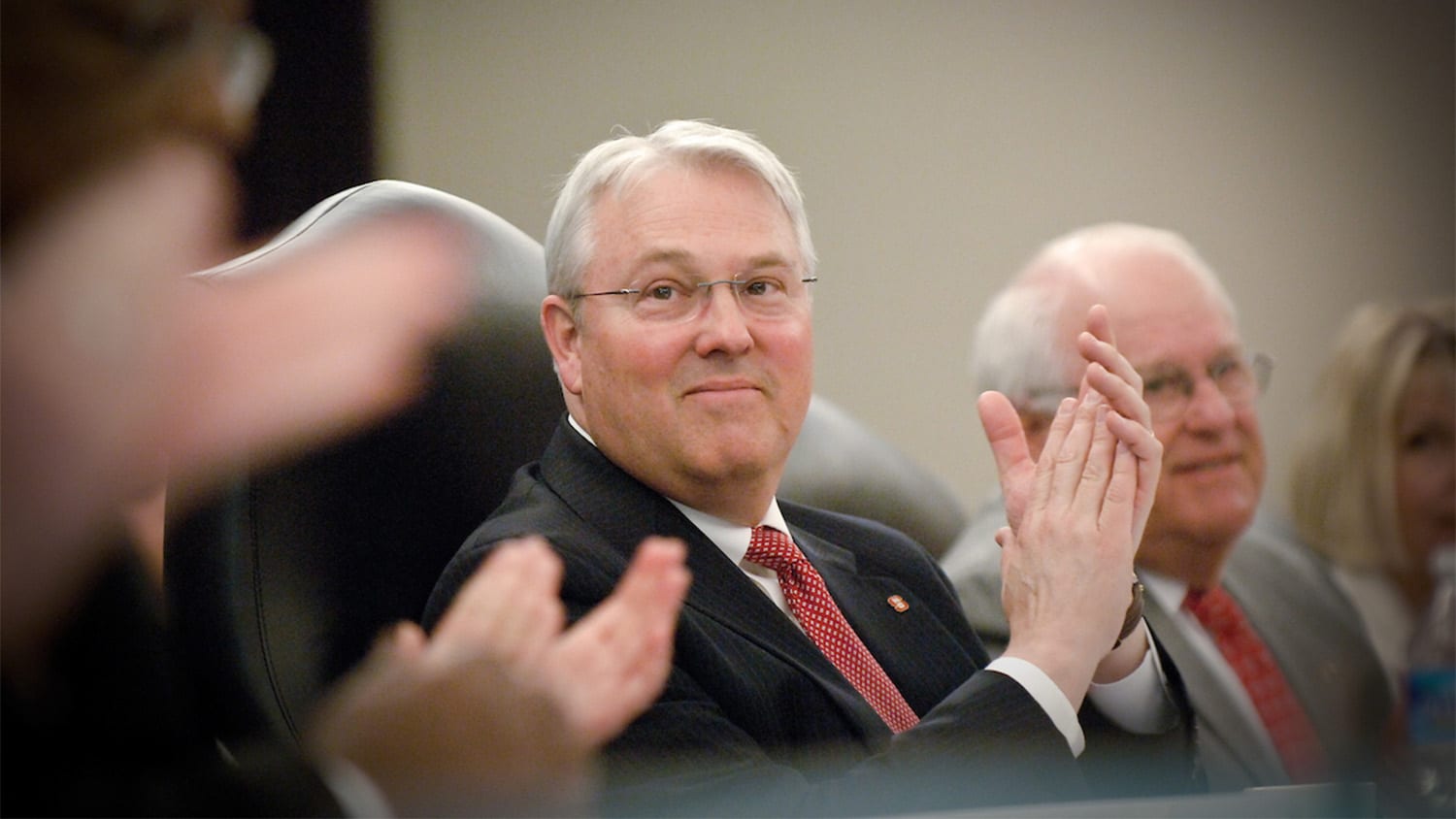Planning To Succeed by Succeeding To Plan
One of Chancellor Randy Woodson’s first orders to his cabinet, staff and faculty when he took office in 2010 was to develop a robust, university-wide strategic plan. The groans were deafening.

Editor’s Note: Chancellor Randy Woodson has announced he will retire on June 30, 2025. This article is part of the Celebrating Transformation initiative, a yearlong effort to honor the chancellor’s 14 years of service and to recognize the university’s extraordinary achievements under his leadership. Learn more and join the celebration at https://transformation.ncsu.edu/.
Chancellor Randy Woodson vividly remembers the reaction he received from his cabinet of leaders, faculty and staff when, shortly after his arrival in the spring of 2010, he first announced he would require a comprehensive and robust strategic plan for every college and unit.
The groans were audible — and he fully understood why.
“Candidly, people in academic institutions don’t think highly of strategic planning because we don’t think like MBA students,” Woodson says. “I probably was one of those people who was skeptical of an organized strategic planning process, a written strategic plan that had goals and aspirations, because many of us have throughout our time seen strategic plans be created but not implemented.”
Even Woodson’s biggest ally, Provost Warwick Arden, wasn’t immediately on board.
“I was a bit of a strategic-planning skeptic,” says Arden, who was elevated from the dean of the College of Veterinary Medicine to interim provost in 2009 and has been full-time provost since Woodson’s arrival in 2010. “I’ve seen a lot of strategic plans, most of them developed by administration with little input from the campus.
“Most of them sit on a shelf, gather dust and are never looked at again.”

That was generally the case since NC State’s strategic plan of 1992, according to Karen Helm, retired director of University of Planning and Analysis. To be fair, those were tough times in which every university planning document had strategies and tactics for reducing personnel and budget during difficult economic times for the University of North Carolina System and directives from the General Assembly.
“We went through a period where we were getting budget cuts almost every year,” Helm says. “So that was the focus of our planning.”
Those results were either less than robust or nonexistent even though, as a general rule, strategic plans precede the 10-year cycle of university accreditation, which for NC State has been every decade since 1994.
Woodson, while not exactly enthused by the process in his earliest administrative days, learned of its importance under his leadership mentor, former Purdue president Martin C. Jischke, who implemented a five-year strategic plan, which included a $1.7 billion capital campaign, when Woodson was serving as dean of agriculture at the land-grant university in West Lafayette, Indiana.
“He taught all of us that strategic plans, if developed through a process that has people buy in and a shared vision, are critically important, if they are followed and constantly evaluated,” Woodson says. “It is a good roadmap for how you manage the institution.
“I’ve been a firm believer since.”
Woodson charged Arden and then-chair of the faculty Margery Overton, a civil engineering professor, to lead nine task forces in developing the first 10-year strategic plan of his administration. They made the process wholly transparent to all constituencies, including periodic updates in planning and results, all of which is available on the university’s strategic planning website.
It wasn’t exactly easy. Woodson arrived at a pivotal point in the university’s history, as it was still facing budget cuts and layoffs from the 2008 economic downturn and it was emerging from a period that had four permanent and interim chancellors in less than a decade.
Woodson wanted bold ideas. With input from every corner of campus, Arden and Overton came back with “The Pathway to the Future,” which was based on five core goals to use as guiding principles for the university from 2011 to 2020.
- Enhance the success of our students through educational development.
- Enhance scholarship and research by investing in faculty and infrastructure.
- Enhance interdisciplinary scholarship to address the grand challenges of society.
- Enhance organizational excellence by creating a culture of constant improvement.
- Enhance local and global engagement through focused strategic partnerships.
Since its initial release, Woodson has requested regular updates on the plan’s progress, with metrics of success. Overton is now senior vice provost for Institutional Strategy and Analysis, providing to the university community reliable data to support effective decision-making.
That, the chancellor says, is the key.
“People started to buy in, once we started allocating resources to the goals in our plan,” Woodson says. “We began reorganizing student affairs [into the Division of Academic and Student Affairs] and our academic programs.
“When people started to see we were allocating resources into the things we believed in, like interdisciplinary programs, and we actually began to fund them, there were a lot fewer skeptics.”
And it actually changed some minds.
“There’s definitely a lot of art in guiding strategic plans,” Arden says. “I feel really good about our strategic-planning efforts.
“I never thought I would say that.”
So, even at the height of the COVID-19 pandemic, as the university began developing a new strategic plan for 2021-2030, the process became much clearer, if not easier, for those involved. And the newest plan (Wolfpack 2030: Powering the Extraordinary) positions the university for the transition it will need to make when Woodson retires by June 30, 2025, as he announced in July.
“It wasn’t like the first time we did it,” Woodson says. “People knew what to expect.”
And that tends to reduce the number of skeptics in the room.
- Categories:


